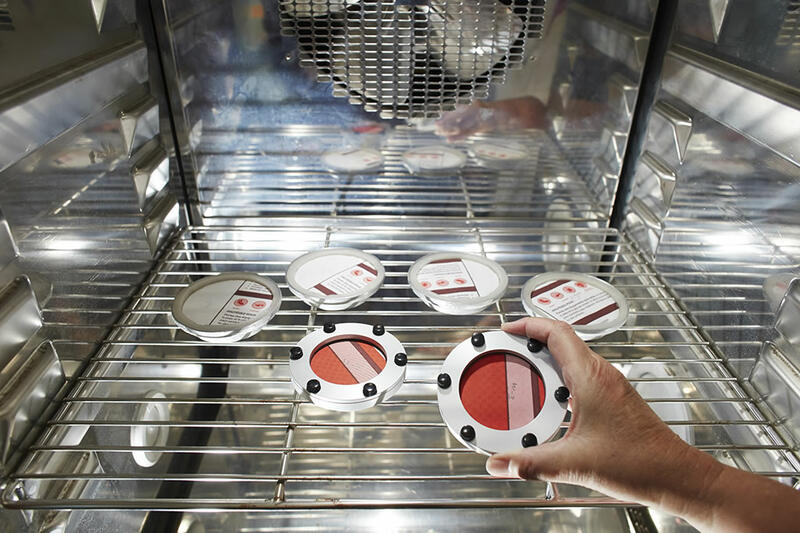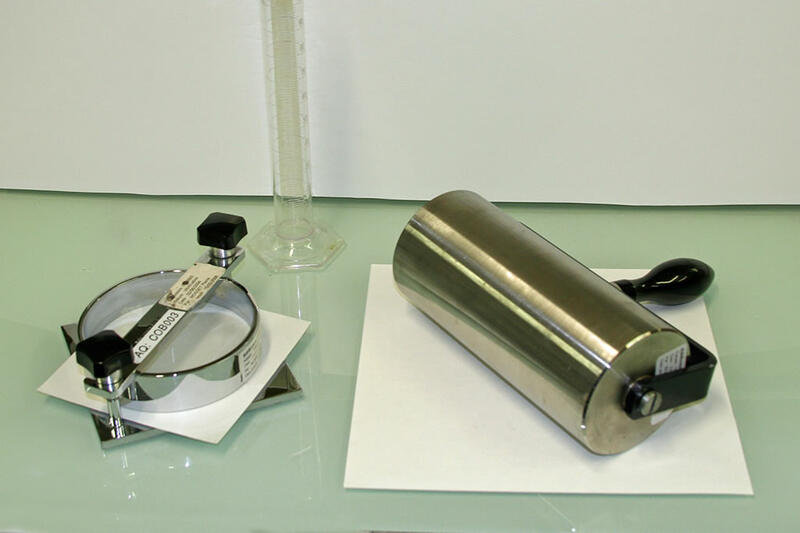
Services
Testing Laboratory
Barrier properties
Water, grease, oxygen, water vapour, contaminants, mineral oils
- Measure the barrier properties of paper and board packaging
- Perform quality control
- Compare with specifications
- Tests in accordance with current standards, or customised to specific needs
General informations
The equipment in the Barrier Properties Laboratory can be used to perform complete characterisations of the barrier properties of cellulose materials.Paper/board materials, moulded cellulose objects, and packaging made from these materials can be tested.
Barrier properties can be measured directly on flat materials, but also on materials that have undergone converting operations (creasing, folding, etc.) or temperature and moisture cycles, in order to assess the impact of these factors on the properties of a converted material.
Technical Data and Achievements
Water barrier
- Water-absorption capacity of a material, using the Cobb method according to ISO 535.
- Duration: 1 minute to several hours.
- Test at ambient temperature or at hot temperature
- Coloured water can be used to visualise coating defects.
- Water repellency of a material using a water-drop test
- Visual rating of the trace left by the drop on the sample tilted to an angle of 45°
- Determination of the roll-off angle, i.e. the minimum angle to which the surface must be tilted for the drop to roll.
- Visual rating of the trace left by the drop on the sample tilted to an angle of 45°
Grease barrier
- Oil absorbency of a material, using the Cobb method according to SCAN-P 37
- Duration: 1 minute to several hours.
- Test at ambient temperature or at hot temperature
- Coloured oil can be used to visualise coating defects.
- ETest using palm kernel oil, according to ISO 16532-1
- Kit Test, according to ISO 16532-2.
- Test using turpentine, according to ISO 16532-3.
Water vapour barrier
- Water vapour transmission rate (WVTR or MVTR) according to ISO 2528. Varying climatic conditions (23°C / 50% RH, 23°C / 85% RH, 38°C / 90% RH, etc.).
Oxygen barrier
- Oxygen transmission rate (OTR) in varying climatic conditions (23°C / 0% RH, 23°C / 50% RH, 23°C / 90% RH, etc.).
- According to ASTM D3985 and ASTM F1927 using a MOCON device fitted with a coulometric detector.
- According to a method derived from ASTM F2714 using a Presens device fitted with an optical detector.
- According to ASTM D3985 and ASTM F1927 using a MOCON device fitted with a coulometric detector.
Contaminant barrier
Measurement of the quantity of contaminants passing through a barrier material and migrating into a selected food simulant (Tenax, isooctane, ethanol, etc.) or a dry foodstuff during a test in controlled time, temperature and moisture conditions selected to suit the packaged foodstuff and its storage conditions.
Contaminants can be substances such as mineral oils or phtalates contained in donor materials with a known composition, or tracers selected for their properties and added in a known quantity to a material free of any contamination.
 |
 |
|
Also to be seen
Consultancy Diagnosis
Centre of Excellence
Testing Laboratory
Trainings
Platforms
Collaborative projects
CTP'S Projects